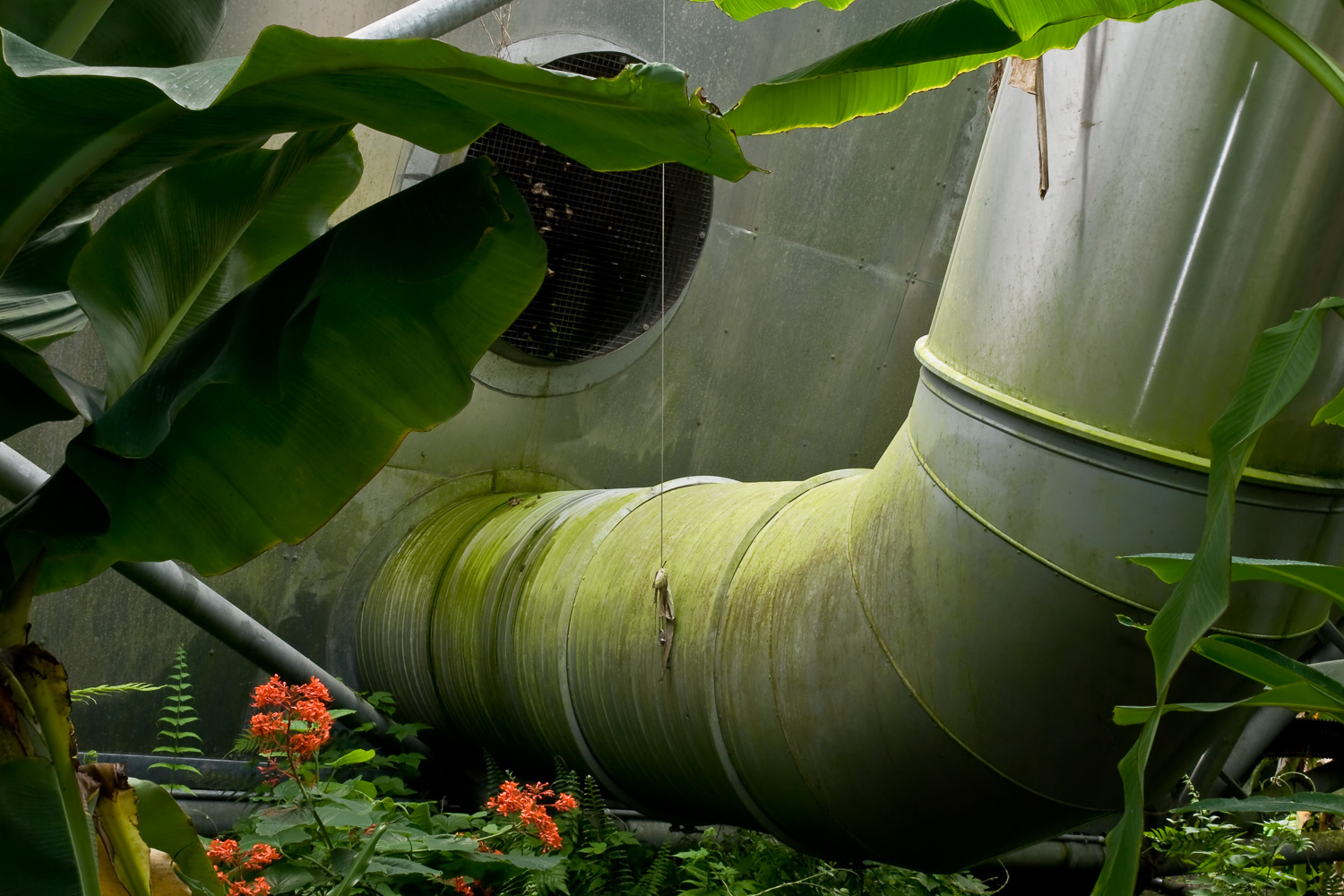Green Ductwork, Eden Project
Terraria Gigantica: The World under Glass
The photographs in the series Terraria Gigantica: the World under Glass frame the world’s largest enclosed landscapes as possible impossibilities: Biosphere 2’s ocean in the Arizona desert, the Henry Doorly Zoo’s desert in the Great Plains of Nebraska, and Eden Project’s tropical rain forest in notoriously gray and cool Cornwall, England. These vivaria are enclosed environments where plants are grown amidst carefully constructed representations of the natural world to entertain visiting tourists. At the same time, however, they support scientific observation and research on the plants and animals housed under these ‘natural conditions’ that require human control of temperature, humidity, irrigation, insects, and weeds to cultivate otherwise impossible environments and species. Taken together, these architectural and engineering marvels stand as working symbols of our current and complex relationship with the natural world.
Built in the late 1980s to research possible space colonization, Biosphere 2 was designed as an airtight replica of the Earth's environment. This glass and metal-framed structure contains a tropical rain forest, mangrove wetlands, a fog desert, savannah grassland, and an ocean with a coral reef. No longer airtight, it is repurposed toward research and education about sustaining our planet Earth, ‘Biosphere 1,’ through study of water, climate, and energy. The Henry Doorly Zoo supports both education and research on a campus with the largest indoor jungle in the United States and the largest indoor desert in the world. Here, the illusionism of these immersive environments also incorporates the display of the animals that live there. The Eden Project was built with a mission to educate about environmental conservation and sustainability. It currently houses over 1 million plants in the world's largest conservatory and models sustainable practices in construction, waste reduction, and resource management.
While the technical and aesthetic demands of these varying missions informed the physical design of these spaces, the required juxtapositions of natural and artificial elements also generate unintentionally striking visual paradoxes that can go unnoticed. These include vistas referring to the idea of landscape, thresholds signifying architecture and fragments that focus on details. In these carefully constructed exhibits, away from the crowds of visitors, the illusion gives way. In these margins, these liminal spaces, the natural and the artificial sometimes meet, overlap, and bleed together, or they collide, resist, and contrast with one another. The visual richness of these small details leads to big questions about what it means to create and contain landscapes. They ask us to think about our interactions with and attitudes about the natural world. They ask us to consider whether these spaces supplement or replace the natural world. They ask us to reflect on the distinction between the natural and the artificial.
The Terraria Gigantica series includes small editions of archival pigment prints on 17x25 inch paper.
